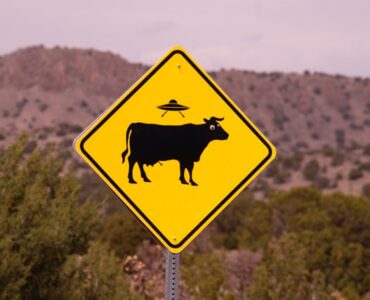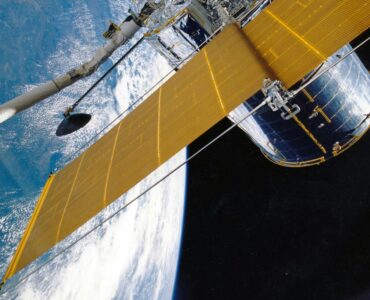The first mention of the Zeta Set attracted the attention of ufologists in connection with the observation of a UFO and the subsequent contact of the 3rd generation, which occurred with the spouses Barna and Betta Hill from September 19 to 20, 1961 (USA, New Hampshire). This case was then thoroughly investigated by representatives of the USAF and was included in the report of the BBC “Blue Book” and in the academic directory of the BBC. After this abduction, several months later, Betty Hill, in several sessions of regressive hypnosis conducted by Benjamin Simon, remembered the exact location of the stars (of the order of 26) in the three-dimensional “astronautical map” shown to her by the object’s pilots.
“It’s like you’re looking out the window…” Betta recalled under hypnosis. — points were scattered on the map. Some are as small as pin heads. Others are the size of a coin… From a large circle, many tench diverged… I asked – what do they mean? He answered that thick lines were commercial routes. Other lines led to places where they sometimes went. Dashed lines show expeditions.”
And luckily, 5 years after this incident, school astronomy teacher Margery Fish was able to identify this position of the stars indicated by Betty Hill. This arrangement of stars can be seen from the constellation of the Reticularis (Reticulum), which is 37 light-years away from the Sun. The two large stars on the map turned out to be Zeta-1 and Zeta-2 stars of this constellation. Some stars never found their place in the constellation then. But in 1969, a complete catalog of the “nearest stars” was published, supplemented by new astronomical data. And everything became clear. It turns out that Glise 86.1, 95 and 97 turned out to be unidentified stars on Betta Hill’s diagram. As the UFO researcher Colonel V. Shelepov pointed out very precisely, “this puzzle gave rise to a new question: who could have known about these stars in 1961, if earthly scientists and astronomers became aware of them known only in 1969?”.
In 1974, a computer simulation of the configuration of the starry sky was carried out, if you look at it in the direction of the Sun from the constellation Retka (this analysis was done by Walter Mitchell). The scheme obtained by Margery Fish and with the help of computer analysis turned out to be completely identical.
Terence Dickinson, a famous astronomer-scientist, highly appreciated the work of Margery Fish. In his article on this subject, he wrote:
“The Fish model is a view of the Solar System from the Zeta-1 and Zeta-2 stars of the constellation Retka. One of the most noticeable stars on map No. 82, the constellation Epsilon Eridanus, is located exactly halfway between the Sun and the above-mentioned pair. The fifteen stars on this map belong to the solar type, which means that they may have habitable planets similar to Earth in their orbits. Astronomers primarily listen to such stars with radio telescopes in the hope of receiving a message from an extraterrestrial mind. It is not surprising that these stars were connected by lines on the map of aliens – after all, astronavigation should logically exist between inhabited worlds.”
In principle, it would be possible to take this whole story with Beta and Barna Hill as fiction, if it were not for indirect confirmation of the facts. It turns out that on September 19, a UFO was recorded by military radar (report No. 100-1-61) over the exact area (Portsmouth, New Hampshire, USA) where the Hills were at that time. This radar observation was conducted by the operator at post 0214.
But the second coincidence turned out to be no less mysterious. From the map built by Betta Hill, it was clear that from the stars Zeta-1 and Zeta-2 routes were laid not only to our Sun, but also to the famous stars Tau Cita and Epsilon Eridanus.
On April 8, 1960, the American radio astronomer Francis Drake from the National Radio Astronomy Observatory in Green Bank developed special equipment for the search for artificial alien signals in the 21 cm wave range. This project was then called “Ozma”. As the first candidates from where one can expect radio emission signals of artificial origin, Drake chose the two closest stars to us — Epsilon Eridanus and Tau Cita from the constellation Seta (Reticulum), which are about 11 light-years away from the Sun.



